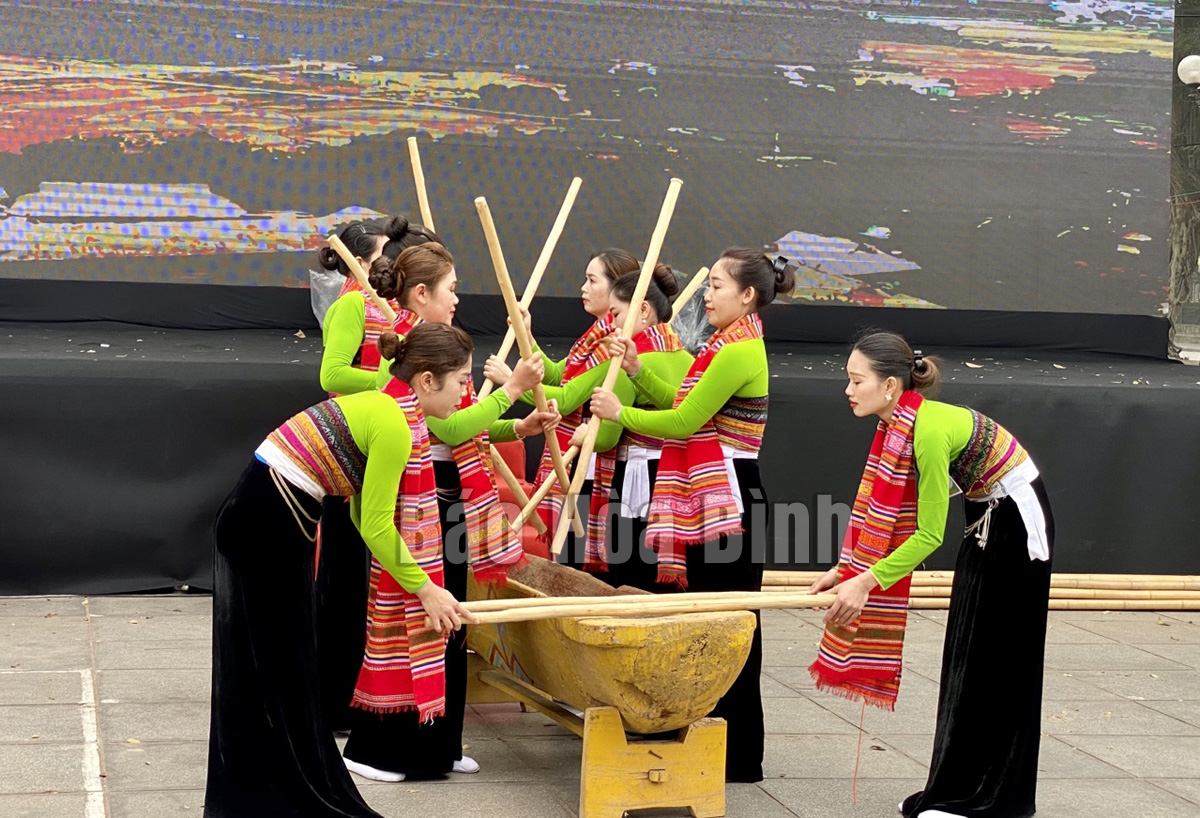



Thai women in traditional clothes perform a folk dance at the Hoa Binh Culture – Tourism Festival held in Hanoi in 2021.
For men, the set comprises a shirt, a belt and pants mainly in the colour of black, while that of women has a head scarf, a blouse, a skirt, a belt, an apron-like cloth upfront, leggings and accessories.
Of note, the costumes are all hand-made by local women.
Travelling to villages of Thai ethnic group people offering community tourism in Mai Chau, such as Lac village in Chieng Chau commune; Van village in Pom Coong; Nhot and Na Phon in Na Phon; and Buoc in Xam Khoe, visitors will be charmed by the elegant beauty of Thai women in their traditional costume.
The costume is neat and skin-tight, which highlights women’s attractive curves. Meanwhile, men’s costume is simple and does not feature meticulous and colourful patterns.
President of the Women’s Union of Mai Chau Ha Minh Huan said that Thai is the largest ethnic group in the district. Over the years, ethnic people have exerted efforts in culture conservation and development, promoting traditional costume of Thai and Mong groups.
Since 2017, the union has rolled out a campaign to encourage local women wear such clothing more frequently, particularly female officials and members of the union.
In addition, agencies, sectors and organisations have stepped up communication work and dissemination of traditional culture in schools and offices, calling on ethnic people to wear traditional clothes.
Ha Thi Hoa, head of the culture-sports office of the district, said that alongside the campaign to wear traditional costume, cultural identity of ethnic groups in the localities are also upheld. The district has joined hands with localities to organise traditional festivals in line with promoting tourism, such as Gau Tao of Mong people and Xen Muong of Thai people.
A traditional market session in the mountainous region is held every Sunday at the district’s centre.
The activities help uphold national pride and turn traditional costume into an outstanding tourism product, contributing to realising a resolution of the People’s Council of the district on tourism development for 2016-20, with a vision to 2030.